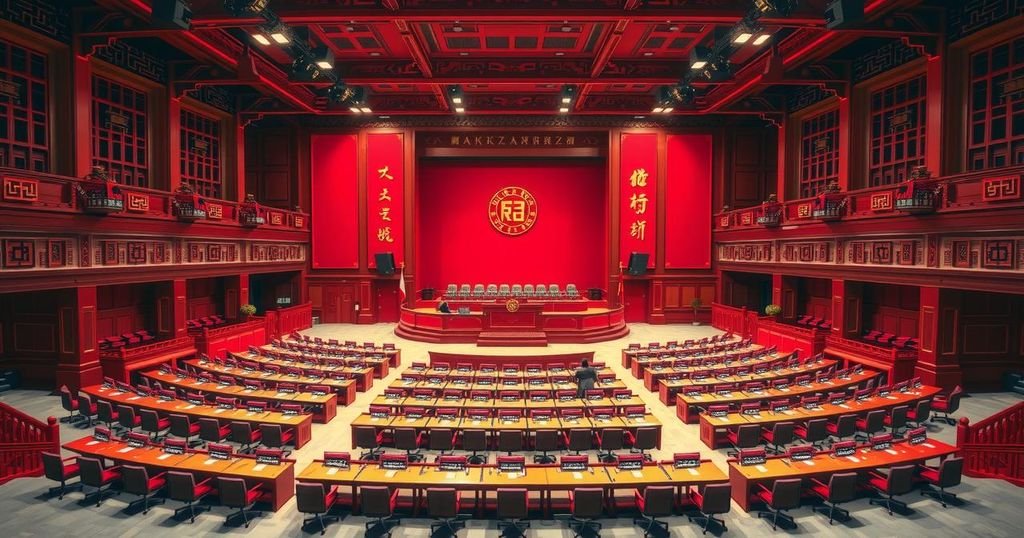China’s National People’s Congress: Economic Ambitions and Defense Spending Surge

China’s National People’s Congress aims for a 5% GDP growth target, while facing global economic challenges and an uncertain trade outlook. The draft budget includes a 7.2% increase in defense spending, emphasizing military growth. A shift towards rekindling ties with the private sector, especially in technology like AI, is being explored as a potential economic strategy.
The National People’s Congress in Beijing, attended by nearly 3,000 individuals including President Xi Jinping and senior members of the Communist Party, commenced with Premier Li Qiang announcing a GDP growth target of around 5% for this year. Although this target reflects the goal set for 2024, Li emphasized the difficulty in achieving it, citing a complex global environment that could detrimentally affect China’s trade and economy.
In light of recent challenges including a prolonged slowdown in the real estate sector and youth unemployment, the Chinese government aims to invigorate domestic demand through consumption-driven policies. Furthermore, the draft budget for defense indicates an increase in spending by 7.2% this year, totaling about $245 billion. This increase is consistent with the previous two years and underscores China’s commitment to strengthening its military during an economic downturn.
China boasts one of the largest military fleets globally and anticipates the commissioning of a third aircraft carrier as early as this year. The nation has approximately 600 operational nuclear warheads, with its defense expenditure growing significantly over the last three decades. Notably, while the official spending reportedly constitutes less than 1.5% of GDP, U.S. assessments suggest actual spending could be 40 to 90% higher.
NHK correspondent Nakamura Genta remarks that the GDP growth target set by the Chinese government surpasses the IMF’s forecast of 4.6%, indicating a determined effort to bolster the economy. He notes that the realization of this target hinges on variables such as ongoing U.S.-China trade tensions. Xi Jinping’s recent meetings with major entrepreneurs like Jack Ma could signal a strategic pivot towards engaging the private sector, especially in technology sectors like AI, which may mitigate U.S. export restrictions on semiconductors.
The National People’s Congress will continue its session until March 11, as China navigates these economic challenges and seeks to balance growth with defense spending.
The opening of China’s National People’s Congress highlights the government’s ambitious GDP growth target of around 5% amid a challenging global landscape. With increasing defense spending and efforts to promote consumption, China appears committed to supporting its economy but faces significant external and internal hurdles. Engagement with the private sector could play a key role in addressing these challenges. The outcomes of this legislative session will be critical as China tries to navigate its economic future.
Original Source: www3.nhk.or.jp






